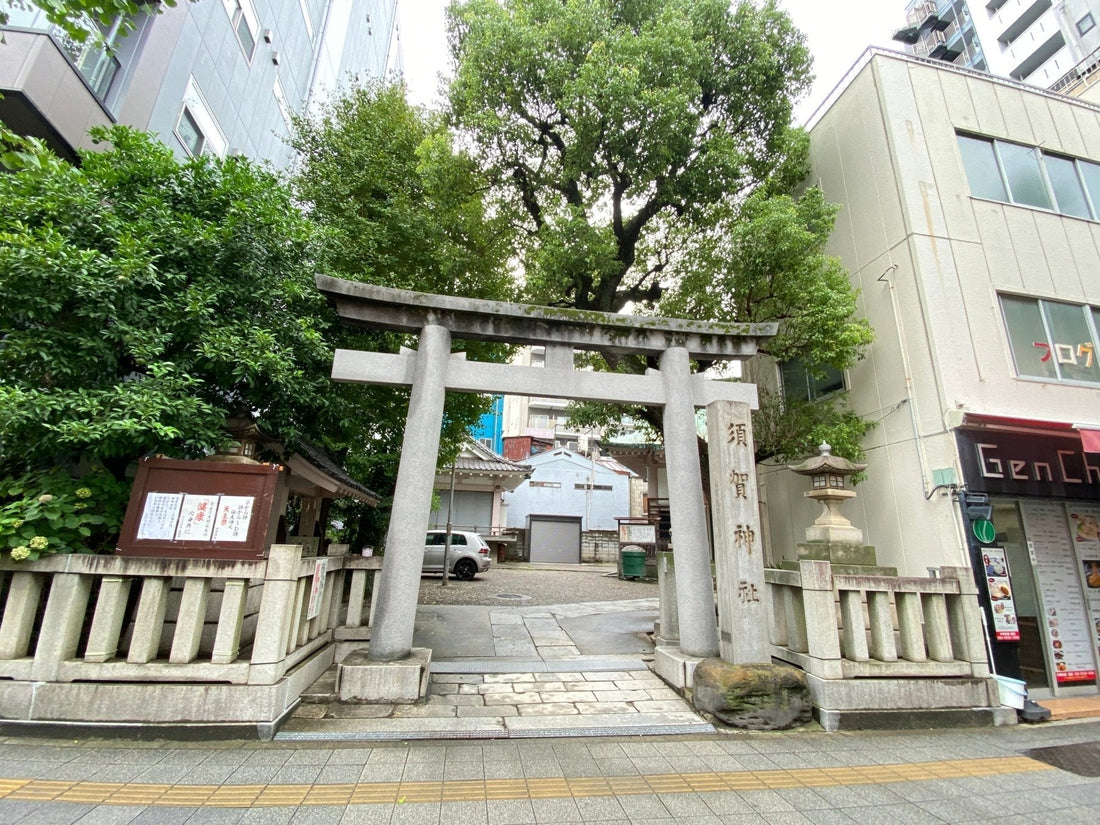
Granite and Tokyo Tour Series 2025 No.9 Tokyo Asakusabashi Suga Shrine
Share
Asakusabashi Suga Shrine — Faith Carved in Stone

In September 2025, I visited Suga Shrine in Asakusabashi, Tokyo. Tucked quietly among modern buildings, this small Shinto shrine preserves centuries of faith through its granite stone lanterns and guardian dogs, standing as silent witnesses to Japanese tradition.
Susanoo-no-Mikoto and His Legacy
The shrine enshrines Susanoo-no-Mikoto, the storm god who, after being expelled from the heavenly realm for unruly acts, defeated the giant serpent Yamata-no-Orochi and married Kushinadahime. He later came to be revered as a deity of agriculture and was identified with Gozu Tennō, a powerful protector against epidemics. His descendants, including Ōkuninushi, played key roles in unifying the land, making him one of the most important figures in Japanese mythology.
From Ancient Foundation to Modern Times
Suga Shrine in Asakusabashi is said to have been founded around 600 CE. Over the centuries, it suffered destruction in the Great Kantō Earthquake (1923) and again during the air raids of World War II (1945). Each time, the local community rebuilt it, and today the main hall stands in reinforced concrete, continuing to guard the neighborhood as a Shinto faith landmark.
Stones That Speak
The shrine grounds feature granite stone lanterns and guardian dogs (komainu). More than decoration, these stone monuments embody people’s wish to draw divine power into their daily lives. Weathered but steadfast, they reflect an unbroken thread of faith in Tokyo’s downtown culture.
Faith Rooted in Daily Life
Across Japan, there are about 80,000 shrines, each rooted in its community and everyday life. Suga Shrine is one of them — a place where faith, memory, and stone remain close to the people of Asakusabashi. For visitors, it shows how deeply Shinto shrines are tied to Japanese daily life.
At a Glance — Suga Shrine (Asakusabashi)
| Item | Details |
|---|---|
| Name | Suga Shrine (Asakusabashi) |
| Location | Asakusabashi, Taitō-ku, Tokyo, Japan |
| Main Deity | Susanoo-no-Mikoto |
| Founded | ca. 600 CE |
| Historical Events | Destroyed in 1923 (Great Kantō Earthquake) and 1945 (WWII); rebuilt in concrete afterward |
| Current Structure | Reinforced concrete shrine buildings |
| Key Features | Granite stone lanterns, komainu (guardian dogs), small sub-shrines |
| Role in Community | Worship for protection from epidemics and disasters; local guardian deity |
| Context | One of approx. 80,000 shrines across Japan, showing how closely Shinto faith is tied to everyday community life |
Japanese Stone Shops - Where Craftsmanship and Culture Meet
